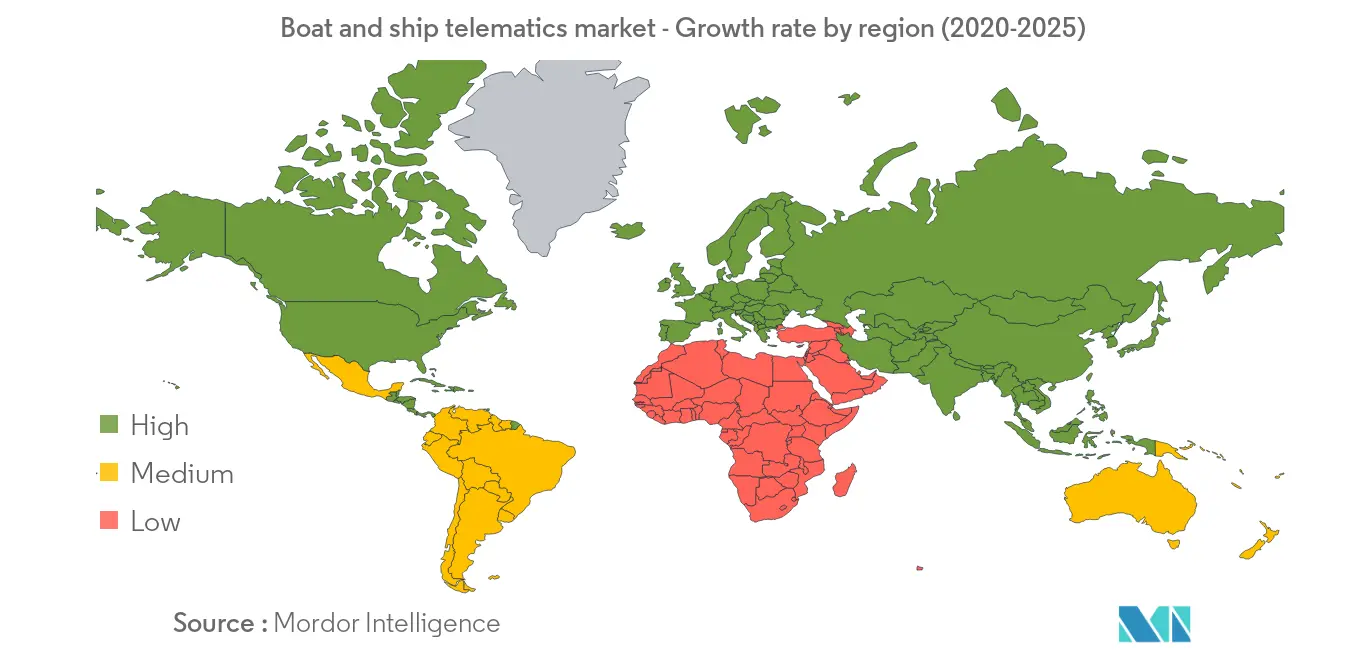Market Trends of Boat and Ship Telematics Industry
This section covers the major market trends shaping the Boat & Ship Telematics Market according to our research experts:
Container Telematics is on the rise
The shipping industry is currently facing an array of challenges such as the slow and unreliable movement of freight, inefficient utilization of ships, containers and other transport modes, slow and unpredictable economic growth, stringent trade and environmental regulations, etc. Due to the growth of the global e-commerce sector, supply chains have become complex and inefficiencies in each stage are causing added cost to the supplier. Factors such as unused container slots (nearly 10% of total sailing), unreliable scheduling, empty container transportation, etc. cost billions of dollars to the shipping industry. Shipping companies are now developing technologies such as the Internet of Things (IoT) to collect, analyze and visualize data that can increase the speed of freight transportation by predicting and avoiding the bottlenecks. Telematics helps in collecting real-time collection and visualization of data that would otherwise be lost or in fragmented form.
Container telematics is still at an initial stage and not as developed as automotive telematics but shipping companies are implementing it in order to reduce unnecessary cost. The refrigerated container segment is expected to be the largest to be equipped with tracker and telematics. Shipping industries are one of the main investors in IoT technologies and since container manufacturers are also moving into IoT space, containers with factory installed telematics systems can be expected in future. Major shipping bodies such as Container Owners Association and Digital Container Shipping Association has promoted cross functional relationship and initiated the development of standards for container telematics

Asia Pacific captures major share of the Industry
Asia Pacific has some of the fastest-growing economies in the world such as China, India, Bangladesh, Malaysia, South Korea, etc. China is the manufacturing hub and exports a large number of goods to the entire world. India is running initiatives such as Make In India which is promoting the local manufacturing by global companies. China's assistance to Pakistan in the development of Gwadar Port and India's assistance to Iran in the development of Chabahar port are instances of growing inter-regional necessity of sea trade and maritime defense. According to United Nations, nearly 70% of international trade by value (nearly 80% trade by volume) is done through the sea with almost 60% of this volume passes through Asia and South China sea carries nearly 33% of the international shipping trade. These factors are promoting the shipping industry growth in the region.
The conflict over the South China Sea has also led many regional nations to deploy high tech naval telematics on their patrol boats, coastal defense, and attack vessels. The increased defense spending has propelled the market for telematics in the region.
However, Asia Pacific reports the highest shipping loss in the world with 21 vessel losses in 2018. Between 2014 to 2018, shipping loss incidents increased by more than 18%. The major reason behind the losses is the increase in volume of shipping traffic. Owing to the aforementioned factor, the telematics market will grow in Asia Pacific during the forecast period.


